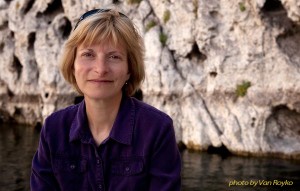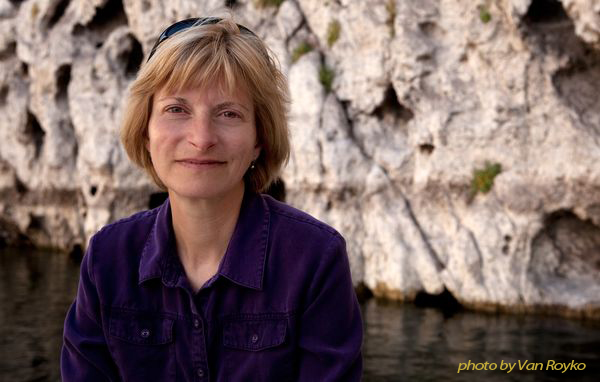
Director and Founder of the Global Water Policy Project Sandra Postel urged communities and individuals to reconsider their relationship with water systems in their area.
The Freshwater Fellow of the National Geographic Society discussed several solutions to the ways human have mismanaged the water supply. Her talk on took place on Tuesday Sept. 23, as part of the Sagan National Colloquium’s H2OWU: Water in Our World lecture series.
Postel began by addressing the difference between the amount of water covering the planet and the amount of fresh water available for humans to actually make use of.
“We are lucky to live on a water wealthy planet, but only 2.5 percent is freshwater and most of that is locked underground,” Postel said. “That is a finite supply for increasing worldwide demand.”
The raise in demand, Postel explained, is linked to emerging economies where more people are entering the middle class. Finite water sources are being stretched thin to meet the demands associated with the growing population, and not just for uses that are immediately apparent such as drinking.
The use of water for agriculture makes up about fifty percent of all consumption, and those plants are used for much more than eating.
“If we think about how many gallons of water it takes to make a simple cotton shirt,” Postel said. “It’s 700 gallons, most of that is to grow the cotton in the field. A typical hamburger takes about 600 gallons…the average American uses about 600 gallons a week.”
Postel described the way we use and manage water as “unsustainable”. She noted groundwater depletion – the water most often used for drinking and other domestic consumption – has “more than doubled” since 1960. Many of the government’s choices in regards to their water supply have focused mainly on serving the needs of people, while the value of water left in its environment has been largely overlooked.
Postel used examples of governments who chose to disrupt water systems, most jarringly the case of the Aral Sea. The Aral Sea was once the fourth largest lake in the world, until Soviet planners in the 1960s diverted the two rivers which fed the body of water to aid crop irrigation efforts. Today, the lake is all but gone, its total volume decreased by roughly 80 percent according to Postel. Fisheries that used to line the Aral dried up as the lake did, leaving those communities with no livelihood, and pollution caused by fertilisers used in the irrigated farmlands polluted the sediment and caused disease among the people who stayed there.
Another example would be the missing 35 million acres of wetlands in the upper Mississippi River. The loss of this natural flood mitigating resource has led to erratic flooding and droughts along that stretch of the river, most notably in 2011 where the largest flood in a century took place followed by a summer of drought so severe that levy’s along the river had to be raised in order for commerce to continue as planned. According to Postel, a 3-5% restoration of those wetlands would have helped mitigate the floods and kept the water flow more normally the following summer.
To mitigate all of this, Postel said we have to make the most out of the water around us and leave as much in place as we can. Citing new agricultural innovations such as “Drip” or “Micro Irrigation” that delivers water directly to the roots of plants without wasting as much water as traditional irrigation, and sensors that can monitor soil saturation, Postel asserted that we can be smarter about the ways we use and manage water supplies.
Strategic removal of obsolete dams and investment of watershed services that use natural means such as incentivising farmers to keep runoff out of rivers to keep reservoirs clean in place of water treatment plants were other tested solutions that Postel offered.
Finally, Postel introduced her “Changing the Course” program that seeks to unite businesses, conservation groups and the public in communities on the ground in an effort to shrink the water footprint and raise productivity. A big victory for the project, which also seeks to get universities involved in their efforts in the near future, came when the U.S. and Mexican governments negotiated a temporary amendment to an existing water usage treaty to allow water to flow back into the Colorado River Delta. The five year pilot program led the Colorado river reaching the Sea of Cortez for the first time since drying up.
